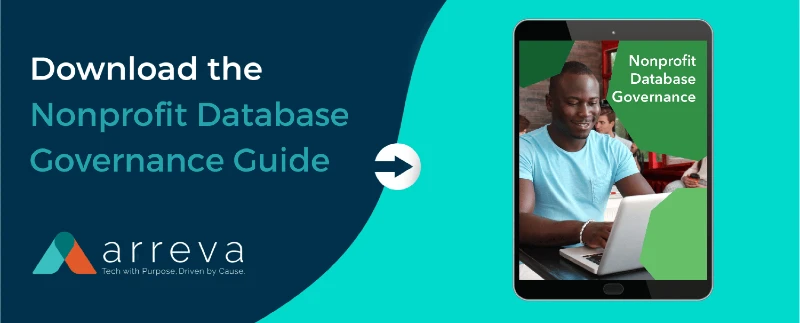More Data, More Problems (And How To Solve Them)

In our first installment of this series, When Good Data Goes Bad we talked about how data deterioration can harm donor relationships, causing donors to lose trust and loyalty. In 5 Essential Steps to Building a Data-Driven Fundraising Program we discussed creating a data-driven culture at your organization, and we outlined what goes into establishing a good system and processes so your campaigns are driven by facts and not just by feelings. Today we’re going to talk more specifically about the kinds of issues that can crop up and multiply as your database grows, the problems they cause, and how those issues can be managed.
Data Deterioration
As we covered previously, “bad” data includes that which is outdated, duplicated, misspelled, factually inaccurate, missing important information, or otherwise incorrect or superfluous. According to experts, data deteriorates at a rate of around 2% a month—up to 30% per year. This translates to missed opportunities across the board. When you don’t have the right information about your donors, you can’t segment them properly and target communications and event invites according to their interests and affiliations.
When you use invalid contact information not only does your message miss its intended target, but in the case of email campaigns, it can mean you end up on email blacklists, further curtailing your ability to communicate with your constituents. Inaccurate data wastes valuable time and resources and not only that, it pollutes your analysis—you can’t extract valid results from invalid data.
Additionally, when data deteriorates, productivity takes a hit. Time spent correcting errors, sending to inactive contacts or the wrong target, or just finding information can add up to dollars your organization might have found better use for. Some experts use the 1/10/100 formula to estimate how much bad data costs an organization: $1 to enter the record, $10 to correct it, and $100 if it’s left uncorrected.
The bigger your database, the bigger the impact on your bottom line. And while maintaining data quality is certainly an expense, the problems arising from bad data will cost significantly more in the long run.
Here a few of the symptoms of data deterioration and how they create problems in your campaigns:
Outdated Information
The average US citizen changes jobs at least a dozen times over their lifetime. Depending on the industry, people may change jobs as often as once every two years. This can result not only in incorrect employment information but outdated email addresses, mailing addresses, and more, all of which not only waste valuable time and money, but skew your engagement analytics. What percentage of your list actually ignored your email and what percentage never saw it at all because they don’t use that address anymore? Outdated data can’t help but lead you in the wrong direction.
Duplicated Records
Typos, alternate spellings, and even changed email addresses can result in duplicate records for the same contact. Duplicate records mean you can spend twice as much of your budget communicating with the same person. It’s one of the most insidious ways that data deteriorates, and one of the most costly, so a robust duplicate-checking feature within your data management system is a must.
Missing Information
Missing information also translates to missed opportunities. Incomplete records mean you may not have the information you need to target a person who you’d otherwise reach via segmentation. For example, lack of correct address and affiliation data can mean you miss inviting a donor to an important fundraising event in their city. As a result, not only do you miss out on a potential donation, you’ve dropped the ball on a chance to reconnect with that donor and remind them of the work you’re doing.
Inactive and Invalid Contacts
As we discussed above, inactive and invalid contacts can result in wasted time and money as well as inaccurate analytics. These alone are good reasons to cull them from your data as often as possible. But using too many of them, especially “junk” contacts (e.g., “no@noneofyourbusiness.com” or “abc123@gmail.com”), can affect your rating as a sender, meaning your mailings are filtered into Spam automatically.
Nip it in the Bud
Your organization’s fundraising success relies on knowing as much as possible about your donors, so make sure your database is as clean as possible, starting with data entry. Establish data entry standards for problematic elements such as multiple formats for country abbreviations (US? U.S.A.? USA?), cities (Ft. Worth or Fort Worth?), and anything else where a slight difference can create a duplicate record or prevent you from accurately targeting donors for communications.
Luckily, a good data management system can mean that your ROI on email and postal campaigns goes up by ensuring that your database is as free as possible of duplicates, invalid or outdated information, and all the other issues that can plague your data as your organization grows.
If you’re operating on faulty data, chances are you’re making less-than-optimal decisions. Do your organization a favor and keep your data clean.


